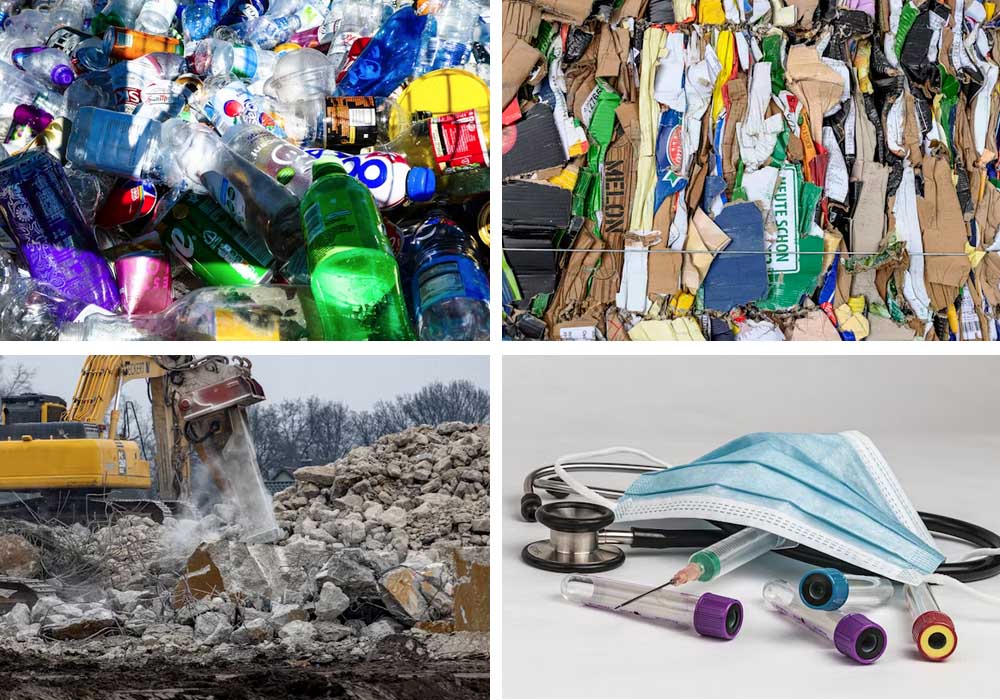Household Waste Sorting Machine
Industrial Waste Sorting Machine
Municipal Solid Waste Sorting Machine
Organic Waste Sorting Machine
Construction Waste Sorting Machine
Medical Waste Sorting Machine
Bulky Waste Sorting Machine
RDF Waste Sorting Machine
C&D Waste Sorting Machine
Green Waste Sorting Machine
What is Waste Sorting
Waste sorting is a systematic process that involves separating different types of waste materials for recycling, reuse, or safe disposal. This process is essential for managing the increasing volume of waste generated by households, industries, and municipalities. By categorizing waste into distinct streams such as organic, recyclable, and hazardous materials, waste sorting helps reduce environmental pollution and promotes sustainable resource management.
Modern waste sorting solutions utilize advanced technologies like optical sensors, artificial intelligence, and mechanical separation to efficiently sort waste. These systems can handle a wide range of materials, from everyday household trash to specialized industrial waste. The goal is to maximize the recovery of valuable resources while minimizing the amount of waste sent to landfills or incineration facilities.

How Waste Sorting Works
1 Initial Separation
Mixed waste enters via heavy-duty conveyor belts, where mechanical screens and size separators remove oversized items before detailed sorting begins.
2 Multi-Sensor Analysis
NIR spectroscopy and high-speed cameras identify material composition with 95%+ accuracy, detecting chemical signatures invisible to human eyes.
3 Intelligent Sorting
AI algorithms process sensor data to classify materials by type (plastic, metal, paper) and purity level, making 200+ decisions per second.
4 Active Separation
Precise pneumatic ejectors and robotic arms divert materials into proper bins with 3mm positioning accuracy for maximum recycling yield.
Waste sorting machines operate through a combination of mechanical processes and advanced detection technologies. The process typically begins with the feeding of mixed waste onto a conveyor belt where initial size-based separation occurs. Larger items are manually or mechanically removed, while smaller materials proceed through the sorting line where sensors and cameras identify different material types based on their physical properties.
Advanced sorting systems employ near-infrared (NIR) spectroscopy, color recognition, and density separation to distinguish between various materials. Once identified, targeted air jets, robotic arms, or other mechanisms physically separate the materials into their respective categories. The sorted materials are then conveyed to different collection points for further processing or recycling, completing the automated sorting cycle with minimal human intervention.
Core Features and Advantages
Modern waste sorting equipment offers several key features that significantly improve efficiency and accuracy. High-capacity processing allows these machines to handle large volumes of waste continuously, while intelligent recognition systems can identify materials with precision rates exceeding 90%. Many systems incorporate self-learning algorithms that improve sorting accuracy over time by analyzing patterns in the waste stream.
The advantages of automated waste sorting are numerous and impactful. These systems dramatically reduce the need for manual sorting labor while increasing overall sorting efficiency. They enable higher purity levels in sorted materials, which increases their recycling value. Automated sorting also improves workplace safety by minimizing human contact with potentially hazardous materials and reduces the environmental impact of waste management operations.
Technical Specifications
Waste sorting machines vary significantly in their technical specifications depending on their intended application. Processing capacities typically range from 1 to 50 tons per hour, with industrial-scale machines handling the higher end of this spectrum. Power requirements can vary from 10 kW for smaller units to over 200 kW for large municipal sorting plants, designed to operate continuously with minimal downtime.
The detection systems in these machines represent the cutting edge of sorting technology. High-resolution cameras can capture images at speeds exceeding 5,000 frames per second, while near-infrared sensors analyze materials at molecular levels for accurate identification. Advanced models incorporate machine vision systems with deep learning capabilities that can recognize and sort hundreds of different material types and compositions with ever-increasing accuracy.
Application Scenarios
Waste sorting machines serve critical roles across numerous industries and municipal operations. In recycling facilities, they separate valuable materials like metals, plastics, and paper from mixed waste streams. Construction sites utilize specialized sorting equipment to separate concrete, wood, and metal components for recycling. Medical facilities employ strict sorting protocols to ensure proper disposal of hazardous biomedical waste while recovering reusable materials.
Organic waste sorting plays a crucial role in composting operations and biogas production, where food waste and green waste are separated from contaminants. Municipal solid waste plants process thousands of tons of household waste daily, recovering recyclables and preparing residual waste for energy recovery. Specialized facilities handle bulky waste items like furniture and appliances, dismantling them to recover valuable components and materials for reuse.
Purchasing Guide
When selecting a waste sorting machine, several key factors should be considered to ensure optimal performance. The nature of the waste stream is paramount - different machines are designed for specific material types and contamination levels. Processing capacity requirements must align with the volume of waste generated, while available facility space may dictate the machine's footprint and configuration.
Technological capabilities represent another critical consideration. Advanced features like AI-powered recognition systems may justify higher initial costs through improved sorting accuracy and reduced labor requirements. Maintenance requirements and local service availability should also be evaluated, as regular servicing is essential for maintaining peak performance. Energy efficiency ratings can significantly impact long-term operational costs, making this another important factor in the purchasing decision.
Maintenance Guide
Proper maintenance is essential for ensuring the longevity and efficiency of waste sorting equipment. Regular cleaning of sensors and optical components prevents accumulation of dust and debris that could impair sorting accuracy. Conveyor systems require periodic inspection of belts, rollers, and drives to maintain smooth operation and prevent unexpected downtime.
Preventive maintenance schedules should include lubrication of moving parts, inspection of wear components, and testing of safety systems. Software updates for intelligent sorting systems should be performed as recommended by the manufacturer to maintain optimal performance. Keeping detailed maintenance records helps identify patterns of wear and facilitates timely replacement of components before failures occur.